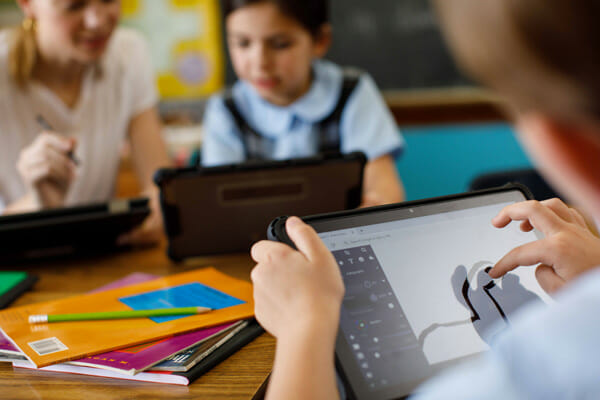By Khoo Hung Chuan, Director – Education Transform and Development, Lenovo Central Asia Pacific
Schools across the Asia Pacific were caught off guard and unprepared when the Covid-19 pandemic hit. The end result was a sudden haphazard migration to intermittent distance learning across the region, with over 100 million learners affected by school closures in early April when the pandemic first erupted globally, according to UNESCO.
But for students to experience the most stimulating learning experience during the pandemic, educators need to blend digital online and physical offline teaching with technology, to allow a seamless and integrated transition between the two worlds. A global survey of 36 markets by the Harvard Graduate School of Education showed more than 50 percent of schools see the value in implementing a hybrid or blended learning approach.
In Malaysia, the ongoing iterations of the Movement Control Order (MCO) has caused school closures nationwide. To support student’s remote and hybrid learning during this period, the Ministry of Education (MOE) saw the need to refresh its digital learning platform by launching new initiatives such the Digital Educational Learning Initiative Malaysia (otherwise known as DELIMa), which is supposed to be one of the largest national deployments in the world, offering applications and services, including digital learning technologies and resources including Microsoft Office 365. It has directly benefited over 10,000 schools, 370,000 teachers, and 2.5 million students in Malaysia.
A smart, holistic approach, comprising multi-layered solutions, including a suite of security tools, integration with enterprise systems and new hardware, combined with technical competency and a can-do attitude is essential for tackling the challenges facing schools during this unprecedented time.
Equipping educators with the right infrastructure to deliver remote learning
To minimise the disruptive impact on students, it is fundamental that educators are equipped with digital solutions that facilitate teaching remotely. While this cannot completely replicate the classroom interaction and non-verbal cues offered by face-to-face teaching, technology creates change in the tools and spaces where learning takes place, allowing for new teaching possibilities.
The trick is to recognise the affordances of different technologies in an educational context and to build an ecosystem of solutions that can blend together. Educators must be provided not only with devices but also with technical support and managed services that ensure the product keeps running across its lifecycle while delivering better productivity, security, and collaboration. Robust meeting software is a must to facilitate communication while being equipped with a suite of security tools offers learners a trusted and secure distance learning experience.

Training programs to develop digital competency
A new generation of children is growing up as digital natives, often fluent in all manner of devices and software before they even reach pre-school. Educators need to constantly maintain a solid grasp of the latest tech trends to connect with students and facilitate learning.
It can be difficult for teachers to acquire and develop such competency through self-learning, and often on their own personal time. Schools should therefore prioritise digital literacy training for their teachers covering a wealth of topics including core digital skills, the basic use of various hardware and software solutions, an understanding of how to deal with minor technical hiccups, and the latest trends in the tech industry. Programs should be flexible, taking into account the background of teachers and their levels of ease.
However, schools may find it an overwhelming task to provide training for their teaching staff, with a myriad of competencies to master in a short amount of time. As Lenovo is collaborating with other industry leaders such as Microsoft and Intel, partner schools can access a truly extensive range of device and training solutions through our groundbreaking EdVision program.
Empower educators to conduct blended teaching
A new reality in education is just starting to materialise, and it is the educators’ responsibility to lead students into this age of digital transformation.
With no end in sight for Covid-19, educators will need to blend a range of physical and distance teaching methods that encompass classroom activities, online homework, and learning reports. Smart classrooms are designed to do just that. Students become accustomed to interacting, collaborating, sharing, and taking quizzes digitally, while teachers can enable screen sharing and online annotations.
Educators should take advantage of technology to track useful metrics on student’s learning progress and create teaching reports to share with stakeholders. With implementing smart classrooms comes the need for safe and secure control of devices in classrooms. Teachers have to learn how to activate internet filters to blacklist inappropriate websites or disable specific components like cameras, speakers, and microphones. Institutions must empower teachers for the challenges of leading digital transformation in the physical or virtual classroom.
At Lenovo, we envisage a mutual learning process, with input from teachers helping our engineers develop new innovative technologies. Under EdVision, a number of pioneer schools across Central Asia Pacific will be provided with free access to online resources that will help them through their education transformation journey, as well as prioritised access to the latest solutions in education tech, including Malaysia
Lenovo will work with Microsoft to host workshops for the school committee teams, ranging from school principals to teachers from selected primary and secondary schools, and will provide tech consultation along their digital transformation process.
Also, solution showcases for higher education will be organised in the coming months to demonstrate the adoption of collaborative learning to further elevate the classroom experience.
Lenovo is committed to transforming education through innovative solutions in Malaysia and the Covid-19 pandemic has only heightened our resolve. Schools can look forward to a rewarding long-term relationship as we work hand-in-hand to support the new paradigm of blended learning and empower students for the future.









